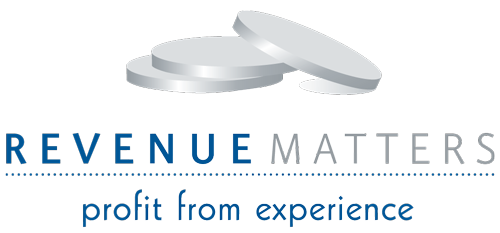
What you don’t know can hurt you. This is especially true for revenue managers trying to navigate the fast-paced world of Internet marketing. Here’s a guide.
Knowledge is power, so it stands to reason that what you don’t know can hurt you (or at least your revenue). When it comes to the fast-paced world of Internet marketing, this statement is especially true.
Third-party Internet Channels
Think of your approach to distribution through third-party Internet channels as you would a mutual fund investment. Not all are designed to perform the same way, so it is helpful to ensure your portfolio is diversified—that you are participating to an appropriate level in select models at the appropriate time. When assessing what programs to participate in and when, it is helpful to know third-party Internet channels can be categorized into five primary business models (a concept that was first introduced in the textbook “An Introduction to Revenue Management for the Hospitality Industry—Principles and Practices for the Real World”, Pearson Prentice Hall 2009):
- Retail (like Booking.com, Quikbook.com): Retail model entities can be identified by the fact that the supplier collects payment directly from the guest and pays a commission (most often 10 percent) after the fact to the retail model entity.
- Merchant (like Hotels.com, Travelocity.com, Expedia.com): In the case of a Merchant model, it is the entity itself that collects payment from the guest and is therefore the “merchant of record” in the transaction. The supplier then collects payment from the merchant model entity in the form of a net rate (often this net rate “floats” off a rate of the day or best available rate plan).
- Opaque (like Hotwire and Priceline Packages): The term opaque refers to a model in which some element of the transaction is “hidden” from the consumer. This hidden element could be the name of the property, which is revealed only after the consumer makes a purchase. In the case of a package where air, car and hotel are bundled together, the price of individual components is not revealed.
- Auction (like LuxuryLink, Priceline’s Name Your Own Price): In the case of an auction model, several consumers may “bid” on a travel experience, but not all will be successful in securing the purchase.
- Referral (like TravelZoo, TravelTicker): With a referral model, the “call to action” is defined by the supplier. Often this call to action is the supplier’s proprietary website or a unique reservation telephone number. The financial arrangement between supplier and distributor is most often advertising-based, transaction-based or some combination of the two.
It is important to recognize that with each of the five business models, consumer motivation and behavior differs, costs of distribution vary considerably, and such things as brand positioning and pricing integrity need to be factored in. It is also important to consider such things as booking windows, stay patterns, contribution potential, cannibalism, channel conflict, ease of management, ancillary revenue impact, marketing exposure, and seasonality. If you just are looking for a place to start, I highly recommend you begin by tracking your channel production in order to establish a baseline—you might just be surprised by what you find.
Proprietary Internet Presence
Your own Internet presence—your proprietary website and associated booking engine along with social media initiatives—are critical components of your overall distribution strategy. With a seemingly endless stream of press releases and an overwhelming number of differing opinions on this topic, it is easy to become confused. The good news is there are a number of basic tenets you can rely on that have remained unchanged.
There are three basic components to search engine marketing (SEM).
- Search engine advertising (SEA): A supplier pays for advertising space, just as they would in a newspaper or magazine. But unlike those print publications, the pages on a search engine such as Google change constantly, so search engines must rely on “keywords” that an end user types in to serve up relevant content. If an advertiser has successfully bid on a keyword (pay per click, or PPC model) that an end user has typed in, then their listing will be displayed. In the case of Google, this would be in the “sponsored links” section at the top and right side of a search result. If a consumer then clicks on the sponsored link, the advertiser will be charged for the amount of their key word bid (cost per click, or CPC). Popular keywords such as “hotels” will result in millions of results. Of course, there isn’t room in the sponsored links section for millions of ads, so only the highest bidders will be displayed. Because of this dynamic state, the bid process is best left to professionals whose entire focus is on SEA.
- Search engine optimization (SEO): A supplier’s listing is served up for consideration (underneath the sponsored links) based on a number of factors. These factors may vary from search engine to search engine, and they also change over time. However, there are a few basic staples:
- Keyword relevancy—does the website contain text and terms that are relevant to what the consumer is searching for?
- Keyword density—assuming relevancy exists, how often do those key words show up on the website?
- Indexing—search engine spiders “crawl” websites periodically searching for content that can be “indexed” for rapid retrieval. The more often web content is refreshed, the more frequently search engines will crawl a particular site—which generally has a positive impact on search results. Certain site content such as flash elements, photographs, and databases either can’t be crawled or are avoided by the search engines. Ensuring tags (text descriptions of the content that can’t be crawled) are both accurate and current is a good way to reduce any barriers to the indexing activities of search engines.
Linkage: If a number of websites or web pages (such as blogs) link to a supplier’s website and those websites and web pages have high keyword relevancy and density, then the supplier’s website will likely enjoy higher ranking within the natural, or organic, search results. The key here is to actively seek linkage partners that would be helpful for your operation. Think racetracks, colleges, CVBs, museums, etc.
A few basic metrics are available to assist you in measuring site performance
- Traffic: There are a number of ways to measure traffic to your website. One of the industry standards is “unique visitors.” Unique visitors are counted when an end user interacts with your site (views pages, generates requests, etc.). If no activity occurs within a given time period, then subsequently occurs again, a new unique visitor will be logged. Reviewing traffic trends associated with such thing as marketing initiatives, season changes and pricing adjustments is very helpful to revenue managers.
- Bounce rate: The bounce rate is normally depicted as a percentage. It reflects situations where a visitor both enters and exits at the same page without visiting other pages on the website in between. Looking at bounce rates associated with various pages is helpful in understanding if there may be page load issues or perhaps if content is out of date or otherwise irrelevant to what the visitor expected. Frequently updating content such as special offers is one example of how to reduce your bounce rates.
- Click-through rate: The term “click through” is a measure of visitor activity as they click on an ad or button on your site and are taken to another area such as a booking engine or a landing page. From a revenue manager’s perspective, knowing how a particular special offer or ad is performing or identifying trends associated with how easily visitors can find links to your booking engine is critical.
- Conversion rate: Also referred to as the “look-to-book” ratio, the conversion rate measures the percentage of guests who visit your booking engine and also end up making a purchase. Conversion rates in the hospitality business can vary depending on the complexity of the property (accommodation choices), nature of travel (business vs. leisure) and other factors. Conversion rates in the 1 percent-3 percent range are normal for leisure resorts with a variety of accommodations whereas conversion rates in the 6 percent-9 percent range can be expected for well-known corporate properties in major cities. For properties that offer purchasing options beyond rooms such as pillows, clothing and souvenirs, conversion rates can be associated with visitors clicking through to store fronts.
- Intent to purchase: The intent to purchase metric is a relatively new concept, and there is no industry standard for it. It is introduced here as a composite of the above metrics and a way to assess overall consumer propensity to buy. Internet marketing ROI is often associated with room bookings coming straight from the booking engine attached to a website. While this is a straightforward measurement, it misses the mark in terms of overall activity that may be broadening exposure to new audiences for a given property or brand.
A process can be established and maintained to help ensure success
Set time aside to meet regularly with your web developer and/or Internet marketing counterpart and marketing director to collaborate on such topics as:
- linkage opportunities;
- targeted search engine advertising (SEA);
- search engine optimization (SEO) strategies;
- key metric analysis;
- marketing initiatives and campaigns;
- guest behavior—from the point of site entry, right through the booking process;
- trends associated with research vs. booking windows; and
- special events and demand generators that may be leveraged.
Revenue management principles still apply
As intimidating as the world of Internet marketing may seem at times, key revenue management principles still apply. After all, your proprietary website is an important distribution channel—one that you can have a great influence over. Here are some places you may wish to start:
- measuring offline revenue impacts;
- knowing which feeder markets are critical and when;
- understanding booking windows and length of stay trends;
- ensuring that promotional offers and packages are loaded correctly;
- actively focusing on both rate plan and unit type merchandizing; and
- measuring production.
This article was first published on Hospitalitynet.org


